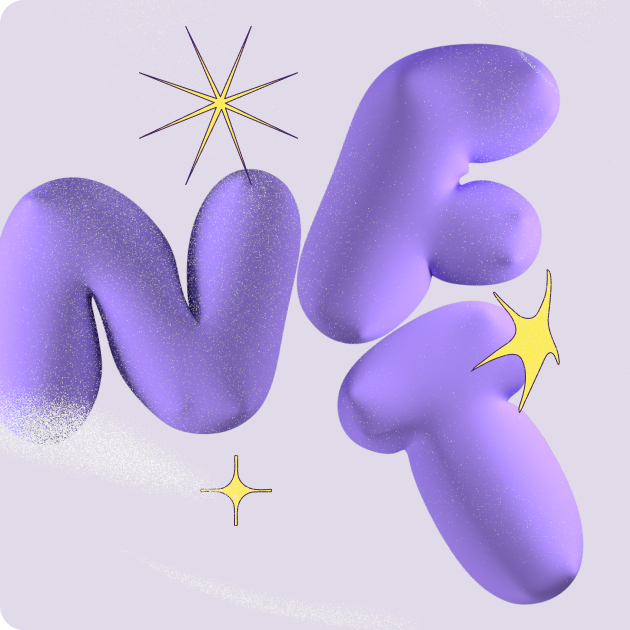This is the first in a series of articles on how brands can develop an NFT strategy. For the second part in the series, see The crypto winter is good for NFTs.
When social media platforms like Facebook and YouTube launched, brands did not have a playbook for how to use them. Initially, brands just replicated what other brands were doing. Today, however, brands build their social media strategies around their business and marketing goals. Wendy’s social media presence focuses on brand building, while Delta uses their social media profiles as an extension of their customer service operations.
Brand social media strategies exist on a continuum, from low functionality (e.g., brand building) to high functionality (e.g, replacing existing business systems).
Your NFT strategy should be no different.
There are various emerging use cases for NFTs for brands. Currently, the most common is for brands to use NFTs as a consumer product (e.g., collectibles, artwork). But NFTs and blockchain technology can power event ticketing systems, reservation systems, loyalty programs, and more.

Note: Your brand may have multiple NFT touchpoints. Delta has a social media profile for customer service (high functionality), but they also maintain a social media profile for overall brand building and communications (low functionality).
Like brands eventually realized with social media, your NFT strategy should complement your brand’s business and marketing goals.
In this article, I will focus on what you need to jumpstart your brand’s NFT consumer product strategy.
Brands like Nike, adidas, and Dolce & Gabbana are selling NFTs as consumer products (e.g., digital merchandise, collectibles). Arguably, this is the easiest method for a brand to introduce NFTs into their product and marketing mix.
Before you start
Before crafting your NFT strategy, I recommend you use the T-shirt Test to evaluate if a NFT consumer product strategy is feasible for your brand.
Let’s assume you’re a consumer brand.
If you had to sell a T-shirt tomorrow with your brand’s IP, what would you sell? How would you determine your pricing strategy for the T-shirt? How would you ensure your T-shirt sells out?
This should serve as a litmus test for your NFT strategy – If you cannot sell a T-shirt, then you will likely not be able to sell an NFT with low functionality.
Crafting your NFT strategy
Since your NFT consumer product strategy will be an extension of your brand’s marketing strategy, the marketing mix (also known as the Four P’s of Marketing) can act as your guide.
The four Ps are the four essential factors involved in marketing a good or service to the public. These are: product (the good or service), price (what the consumer pays), place (the location where a product is marketed), and promotion (the advertising).

Resources required to launch your NFT strategy
What you actually need to launch your NFT strategy
A marketing team
Marketers will define an NFT strategy that is complementary to your brand’s marketing and consumer product strategy. Within this team, you’ll also want a community manager to focus on growing your NFT community.
An NFT strategist / agency
Your overarching NFT consumer product strategy should come from your marketing team or another in-house consumer-focused team. An NFT strategist or NFT strategy agency can guide you on important technical and creative decisions regarding your NFT strategy, such as which blockchain you use to mint your NFTs, how to design and package your NFTs, etc.
Graphic or motion designers
Graphic designers will design your NFTs. This is a critical role for your NFT strategy because the artwork is often the focal point of your NFT collection.
NFT developer
NFT developers will mint your NFTs to the blockchain of your choice. Minting NFTs requires developers to write a set of rules, known as a smart contract. This is an extremely critical role for deploying NFTs, and it is important that you work with developers that you can trust.
Smart contracts are fully automated, and bad actors have and will continue to write malicious code that can compromise the integrity of your project and brand.
MoonPay
Obviously, this is a MoonPay blog. NFT Checkout is built for brands, creators, and marketplaces that want to give their users access to NFTs. It’s the solution that enables the purchase of NFTs with a credit card. MoonPay’s NFT Checkout product is critical If you want to make NFTs available to your core audience without requiring users to purchase cryptocurrencies first.
What you don’t need to launch your NFT strategy
A separate NFT department
You should not isolate your NFT strategy within your company. Your NFT strategy should sit with someone (or within a team) who can craft a strategy that ladders into your core business goals.
Discord
Discord is not a requirement for your NFT strategy whatsoever. If anything, traditional brands should build their NFT communities where their core audience already is. If your audience is not on Discord, meet them on TikTok, Twitter, or Facebook.
A roadmap or “utility”
Instead of forcing utility onto an image, you can integrate NFTs and blockchain technology into the functions of your core business. NFTs can augment systems and programs, such as ticketing systems, reservation systems, loyalty programs, and more.






